Mitsubishi Space Star vs VW Polo – Which model is better for everyday use?
Both models have their strengths – but which one suits you more?
Compare performance, efficiency, price and space directly: Mitsubishi Space Star or VW Polo?
Here’s where it gets real: The technical differences in detail
Costs and Efficiency: Price and efficiency are often the first things buyers look at. Here it becomes clear which model has the long-term edge – whether at the pump, the plug, or in purchase price.
Mitsubishi Space Star has a clearly advantage in terms of price – it starts at 11600 £, while the VW Polo costs 17000 £. That’s a price difference of around 5353 £.
Fuel consumption also shows a difference: the Mitsubishi Space Star manages with 4.90 L and is therefore hardly perceptible more efficient than the VW Polo with 5.10 L. The difference is about 0.20 L per 100 km.
Engine and Performance: Under the bonnet, it becomes clear which model is tuned for sportiness and which one takes the lead when you hit the accelerator.
When it comes to engine power, the VW Polo has a decisively edge – offering 207 HP compared to 71 HP. That’s roughly 136 HP more horsepower.
In acceleration from 0 to 100 km/h, the VW Polo is clearly quicker – completing the sprint in 6.50 s, while the Mitsubishi Space Star takes 14.10 s. That’s about 7.60 s faster.
In terms of top speed, the VW Polo performs distinct better – reaching 240 km/h, while the Mitsubishi Space Star tops out at 167 km/h. The difference is around 73 km/h.
There’s also a difference in torque: the VW Polo pulls convincingly stronger with 320 Nm compared to 102 Nm. That’s about 218 Nm difference.
Space and Everyday Use: Whether family car or daily driver – which one offers more room, flexibility and comfort?
Both vehicles offer seating for 5 people.
In curb weight, the Mitsubishi Space Star is evident lighter – 940 kg compared to 1143 kg. The difference is around 203 kg.
In terms of boot space, the VW Polo offers distinct more room – 351 L compared to 235 L. That’s a difference of about 116 L.
In maximum load capacity, the VW Polo performs a bit better – up to 1125 L, which is about 213 L more than the Mitsubishi Space Star.
When it comes to payload, VW Polo somewhat takes the win – 457 kg compared to 400 kg. That’s a difference of about 57 kg.
All in all, the VW Polo shows itself to be outperforms in nearly all aspects and secures the title of DriveDuel Champion.
It impresses with the more balanced overall package and proves to be the more versatile companion for everyday use.
Mitsubishi Space Star
The Mitsubishi Space Star offers a compact yet surprisingly spacious experience, making it an ideal choice for urban dwellers who need agility and comfort. Its sleek design is complemented by a range of vibrant colour options, adding a touch of flair to everyday commutes. With a focus on efficiency and practicality, the Space Star combines a user-friendly interface with modern technology to ensure a smooth driving experience.
details @ presse.mitsubishi-motors.de
@ presse.mitsubishi-motors.de
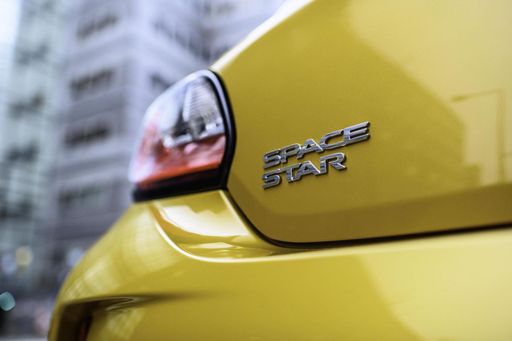 @ presse.mitsubishi-motors.de
@ presse.mitsubishi-motors.de
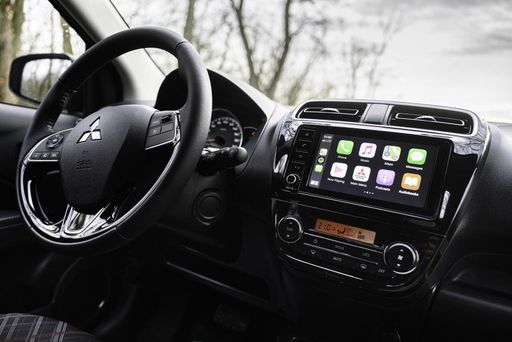 @ presse.mitsubishi-motors.de
@ presse.mitsubishi-motors.de
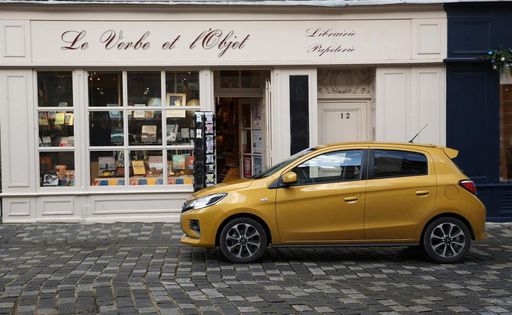 @ presse.mitsubishi-motors.de
@ presse.mitsubishi-motors.de
VW Polo
The VW Polo remains a popular choice in the compact car segment, known for its sleek design and sophisticated styling. Inside, it offers a surprisingly spacious cabin with high-quality materials and intuitive technology features, ensuring a comfortable driving experience. Its agile handling and responsive performance make it an excellent option for both city commuting and longer journeys.
details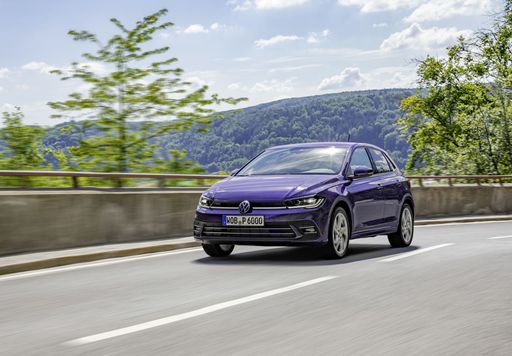 @ Volkswagen
@ Volkswagen
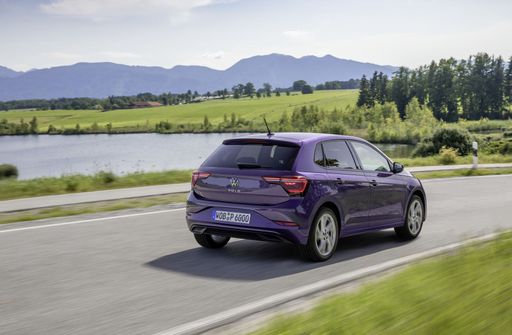 @ Volkswagen
@ Volkswagen
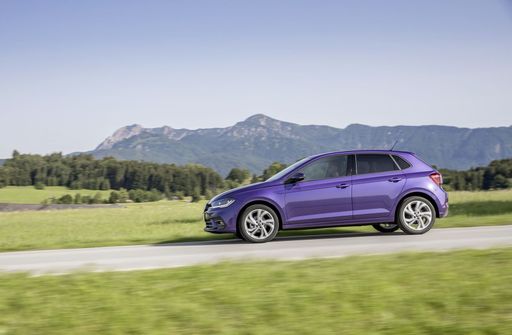 @ Volkswagen
@ Volkswagen
 @ Volkswagen
@ Volkswagen
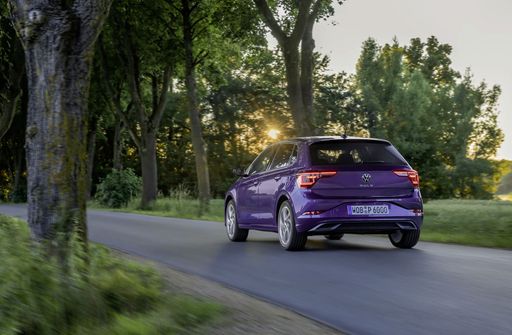 @ Volkswagen
@ Volkswagen
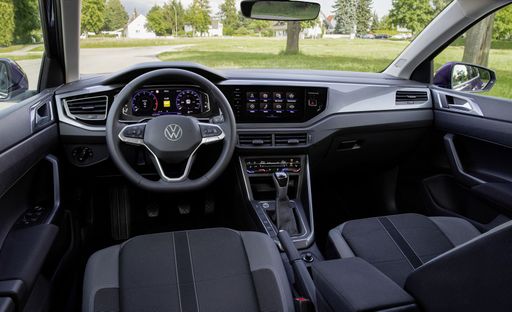 @ Volkswagen
@ Volkswagen

|

|
|
|
|
Costs and Consumption |
|
|---|---|
|
Price
11600 - 18700 £
|
Price
17000 - 30400 £
|
|
Consumption L/100km
4.9 - 5.5 L
|
Consumption L/100km
5.1 - 6.5 L
|
|
Consumption kWh/100km
-
|
Consumption kWh/100km
-
|
|
Electric Range
-
|
Electric Range
-
|
|
Battery Capacity
-
|
Battery Capacity
-
|
|
co2
112 - 125 g/km
|
co2
116 - 148 g/km
|
|
Fuel tank capacity
35 L
|
Fuel tank capacity
40 L
|
Dimensions and Body |
|
|---|---|
|
Body Type
Hatchback
|
Body Type
Hatchback
|
|
Seats
5
|
Seats
5
|
|
Doors
5
|
Doors
5
|
|
Curb weight
940 - 1011 kg
|
Curb weight
1143 - 1378 kg
|
|
Trunk capacity
209 - 235 L
|
Trunk capacity
351 L
|
|
Length
3845 mm
|
Length
4074 mm
|
|
Width
1665 mm
|
Width
1751 mm
|
|
Height
1505 mm
|
Height
1431 - 1451 mm
|
|
Max trunk capacity
881 - 912 L
|
Max trunk capacity
1125 L
|
|
Payload
359 - 400 kg
|
Payload
432 - 457 kg
|
Engine and Performance |
|
|---|---|
|
Engine Type
Petrol
|
Engine Type
Petrol
|
|
Transmission
Manuel, Automatic
|
Transmission
Manuel, Automatic
|
|
Transmission Detail
Manual Gearbox, CVT
|
Transmission Detail
Manual Gearbox, Dual-Clutch Automatic
|
|
Drive Type
Front-Wheel Drive
|
Drive Type
Front-Wheel Drive
|
|
Power HP
71 HP
|
Power HP
80 - 207 HP
|
|
Acceleration 0-100km/h
14.1 - 15.8 s
|
Acceleration 0-100km/h
6.5 - 15.6 s
|
|
Max Speed
163 - 167 km/h
|
Max Speed
171 - 240 km/h
|
|
Torque
102 Nm
|
Torque
93 - 320 Nm
|
|
Number of Cylinders
3
|
Number of Cylinders
3 - 4
|
|
Power kW
52 kW
|
Power kW
59 - 152 kW
|
|
Engine capacity
1193 cm3
|
Engine capacity
999 - 1984 cm3
|
General |
|
|---|---|
|
Model Year
2020 - 2022
|
Model Year
2024 - 2025
|
|
CO2 Efficiency Class
C, D
|
CO2 Efficiency Class
D, E
|
|
Brand
Mitsubishi
|
Brand
VW
|
What drivetrain options does the Mitsubishi Space Star have?
Available configurations include Front-Wheel Drive.
The prices and data displayed are estimates based on German list prices and may vary by country. This information is not legally binding.
